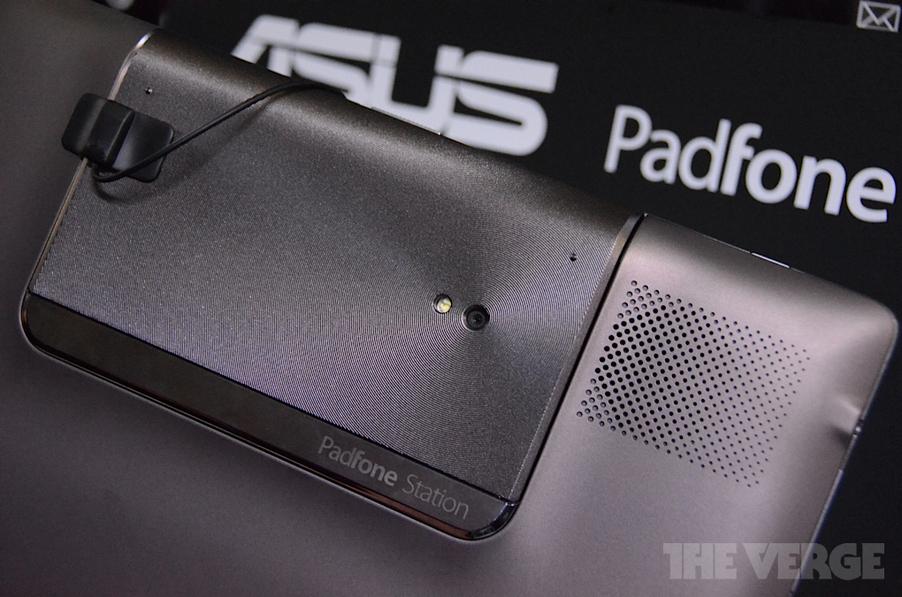
Late May of 2011 was the first time we ever caught a glimpse of the ASUS Padfone. We were (nearly) floored by the mystery device and still in awe of ASUS' strong arrival in the tablet game. At that point, they had just launched the Eee Pad Transformer, and the Eee Pad Slider was on its way – two netbook/tablet hybrids that showed the beginning of a new path for Android. ASUS then outs the Padfone only to blow our minds again with a atypical tablet-phone combination.
At that time, details were scarce. We could only guess at what the poorly cropped pictures were showing off. Just a few days later at Computex, however, ASUS pulled the curtain and assured us that we could expect the Padfone around Christmas, preloaded with Ice Cream Sandwich. We also got some demonstrations with non-working, plastic mock-ups to boot.
Since then, ASUS has played the silent card on their bizarre device (except that we would see it again at MWC), leaving those of us who were actually interested in the Padfone at the mercy of our own imaginations. No specs. No price point. Nothing.
Early this morning in Barcelona, Spain, Mobile World Congress officially began. Among the several press events was one from ASUS, where they announced a re-branding of their tablet line and showed off three new tablets and the Padfone.
So. After this agonizing wait, what exactly does the Padfone entail? Well, it's being marketed as a 3-in-1device instead of just the 2-in-1 you would expect. (Remember that strange equation from their YouTube teaser?) Instead of the Padfone simply sliding into the back of the tablet dock, dubbed the Padfone Station, the Station can be popped into a keyboard dock of its own, appropriately named the Padfone Station Dock. In other words, the phone can be docked in a tablet-like terminal, which can then be docked in a keyboard dock, much like the Eee Pad Transformer and Prime.
And specs? The Padfone itself comes bearing a 4.3-inch Super AMOLED qHD display, Snapdragon S4 dual-core chipset, Adreno 225 GPU, 8-megapixel rear camera, 1,520mAh battery, 16 to 64GB storage and ASUS' stock-like version of Ice Cream Sandwich. The Station is useless by itself – it is just a battery, a speaker and a touchscreen panel in a tablet housing, and the Station Dock is not unlike the previous keyboard docks we've seen from ASUS.

But there's more. What if you want to answer your phone while it's docked? It would be quite a hassle to undock everything just to take (or make) a call. Through all of the fumbling you would do, you might get to the phone time to get a missed call notification. Of course, you could just plug a headset into the Station and answer calls from there. But ASUS has a better solution ... we think. They also introduced a stylus that is not only for touch input, but doubles as a Bluetooth headset. Weird, huh?
I'm not going to lie. I love the idea. I really do. ASUS is tearing up the tablet market and showing everyone exactly how to differentiate with such a flexible device. But I do have some reservations with the Padfone.
Simply too much is hinging on the handset itself. As you would expect, the Padfone Station will not work with any handset but the Padfone – meaning, the success of the pair (and Station Dock) is hinging entirely on the success of the phone. ASUS' 3-in-1 device is limited to whatever markets officially pick it up. I don't like those odds.
Also, I expected nothing less than to see NVIDIA's 4-PLUS-1 Tegra 3 in this beast. And considering the Padfone doesn't come with LTE connectivity in tow, there is seemingly no reason it shouldn't. However, it has a Krait, which isn't exactly a bad thing. But seeing as ASUS has been the front runner for NVIDIA's new chipset technology and the fact that the phone will be used in three different forms, it would make sense to build with a little more processing power and with future in mind. I'm also quite disappointed by their decision to use a qHD display instead of 720p. And a 1,520mAh battery? Really?
I guess I'm nitpicking, really. But for a phone that comes with some relatively expensive accessories, I would want it to have the best of everything. (We don't know price on the Station or Station Dock, but all previous keyboard docks from ASUS have had a ticket price of $150. It would be a fairly safe bet to price at least the Station Dock at that. The Station itself, though, has the potential to be quite expensive.) However, the Padfone, like most other phones these days, shines in several areas and comes up shy in others.
While I revel at the fact of one device being so versatile, I think I would rather stick with separate devices for a tablet and phone ... for now at least. ASUS has some brilliant minds working for them. The Padfone is a testament to that. But it's simply not for me. I'll consider the Padfone 2 or 3, especially if ASUS has a bigger presence in the smartphone market.
Kudos for the effort, ASUS. You're really on to something. Now refine it.
What do you ladies and gents think about the Padfone and its different docks? Is it something you would be interested in if the price is right? Or would you rather carry separate devices?
Images via The Verge, Expert Reviews